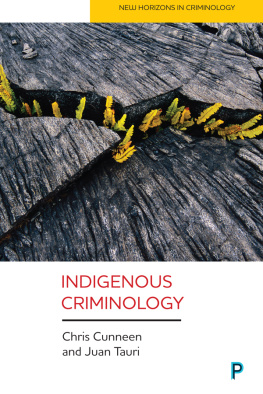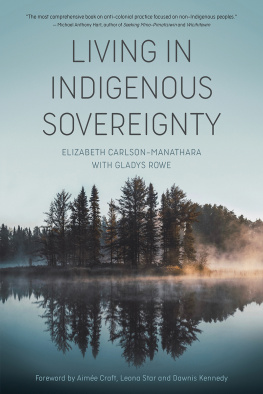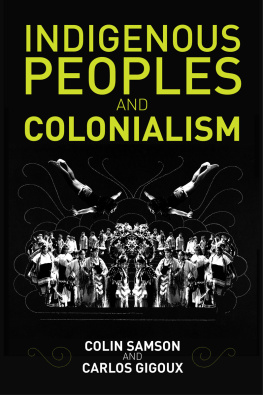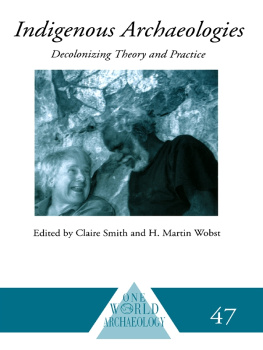Human Capital Development and Indigenous Peoples
In all countries for which data is available, Indigenous peoples have lower rates of formal educational participation and attainment than their non-Indigenous counterparts. There are many structural reasons for this, but it may in part be related to the perceived relationship between the costs and benefits of education. Human Capital Development and Indigenous Peoples systematically applies a human capital approach to educational policy, to help understand the education and broader development outcomes of Indigenous peoples.
The basic Human Capital Model states that individuals, families and communities will invest in education until the benefits of doing so no longer outweigh the costs. This trade-off is often considered in monetary terms. Here the author broadens cost-benefit definitions to include health and wellbeing improvements alongside social costs driven by discrimination and unfair treatment in schools. With coverage of the Americas, Asia, Australia and New Zealand, the book critiques existing approaches, and provides an outlet for the self-described experiences of a diverse set of Indigenous peoples on the breadth of educational costs and benefits. Combining new quantitative analysis, cross-national perspectives and an explicit policy focus, this book provides policy actors with a detailed understanding of the education decision and equips them with the knowledge to enhance benefits while minimising costs.
This book will appeal to policy-engaged researchers in the fields of economics, demography, sociology, political science, development studies and anthropology, as well as policy makers or practitioners who are interested in incorporating the most recent evidence into their practice or frameworks.
Nicholas Biddle is Associate Professor in Public Policy at the Australian National University and Associate Director of the ANU Centre for Social Research and Methods. He is also a Senior Fellow at the Centre for Aboriginal Economic Policy Research and a Fellow of the Tax and Transfer Policy Institute.
Routledge Studies in Indigenous Peoples and Policy
There are an estimated 370 million Indigenous Peoples in over 70 countries worldwide, often facing common issues stemming from colonialism and its ongoing effects. Routledge Studies in Indigenous Peoples and Policy brings together books which explore these concerns, including poverty; health inequalities; loss of land, language and culture; environmental degradation and climate change; intergenerational trauma; and the struggle to have their rights, cultures and communities protected.
Indigenous Peoples across the world are asserting their right to fully participate in policy making that affects their people, their communities and the natural world, and to have control over their own communities and lands. This book series explores policy issues, reports on policy research and champions the best examples of methodological approaches. It will explore policy issues from the perspectives of Indigenous Peoples in order to develop evidence-based policy and create policy-making processes that represent Indigenous Peoples and support positive social change.
Human Capital Development and Indigenous Peoples
Nicholas Biddle
Human Capital Development and Indigenous Peoples
Nicholas Biddle
First published 2019
by Routledge
2 Park Square, Milton Park, Abingdon, Oxon OX14 4RN
and by Routledge
711 Third Avenue, New York, NY 10017
Routledge is an imprint of the Taylor & Francis Group, an informa business
2019 Nicholas Biddle
The right of Nicholas Biddle to be identified as author of this work has been asserted by him in accordance with sections 77 and 78 of the Copyright, Designs and Patents Act 1988.
All rights reserved. No part of this book may be reprinted or reproduced or utilised in any form or by any electronic, mechanical, or other means, now known or hereafter invented, including photocopying and recording, or in any information storage or retrieval system, without permission in writing from the publishers.
Trademark notice: Product or corporate names may be trademarks or registered trademarks, and are used only for identification and explanation without intent to infringe.
British Library Cataloguing-in-Publication Data
A catalogue record for this book is available from the British Library
Library of Congress Cataloging-in-Publication Data
A catalog record has been requested for this book
ISBN: 978-1-138-49836-5 (hbk)
ISBN: 978-1-351-01639-1 (ebk)
Typeset in Times New Roman
by Out of House Publishing
Contents
About the topic
The more we learn about other species, the less unique us Homo sapiens seem. Many of the things that we had thought we do well that other animals cant complex language, creation of tools, co-operation, running for really long distances (Pickering and Bunn 2007) have been shown to be present in various birds, mammals or even insects to a much greater degree than previously assumed. It may be true that there is no single animal that does all of these things as well as humans, but that is hardly a ringing endorsement.
Martin Seligman and colleagues (2016) have instead argued that the unrivaled human ability to be guided by imagining alternatives stretching into the future prospection uniquely describes Homo Sapiens. We can imagine for ourselves (or for those we care about) a range of future lives, weigh up the pluses and minuses of living these lives, reflect on what it would take to achieve them and make decisions accordingly.
This prospection may be mundane and in the very short term. If I decide to walk to work rather than drive, will the extra exercise and fresh air I get, as well as the amount of money I save on parking, outweigh the prospect of getting rained on and being in the office a bit later. Even making such a small decision requires me to imagine a healthier, happier me with slightly more money in my bank account, as opposed to a slightly poorer, but drier and more productive version of myself.
This specific decision is only really made on a frequent basis by someone in a very privileged position someone in a high paying job, in one of the wealthiest and pleasant cities in one of the wealthiest countries in human history. What a person can feasibly imagine and plan for is very context and person specific. But, such prospection is required for the close to infinite number of decisions that humans have been making since they separated from their ancestors.
It is true that many of the decisions that we make do not end up leading to (ex post) the best outcome for our future selves. It is often very hard to balance and weight probabilities, and to balance and weight risks (Johnson and Busemeyer 2010). Often, we economise on cognitive load and make decisions rapidly using heuristics or what we might colloquially refer to as gut instinct the System 1 (fast, instinctive and emotional) thinking that Kahneman (2011) juxtaposes with the deliberative and logical System 2 thinking. We make many of our decisions out of habit, or because that is what we have done the last dozen, or hundred times (Duhigg 2013).
Whatever the imperfections in our decision-making processes, there is increasing evidence that humans are unique in the way they can consider future outcomes and plan accordingly, and importantly that this ability is held across history, across cultures and across domains of decision making.








